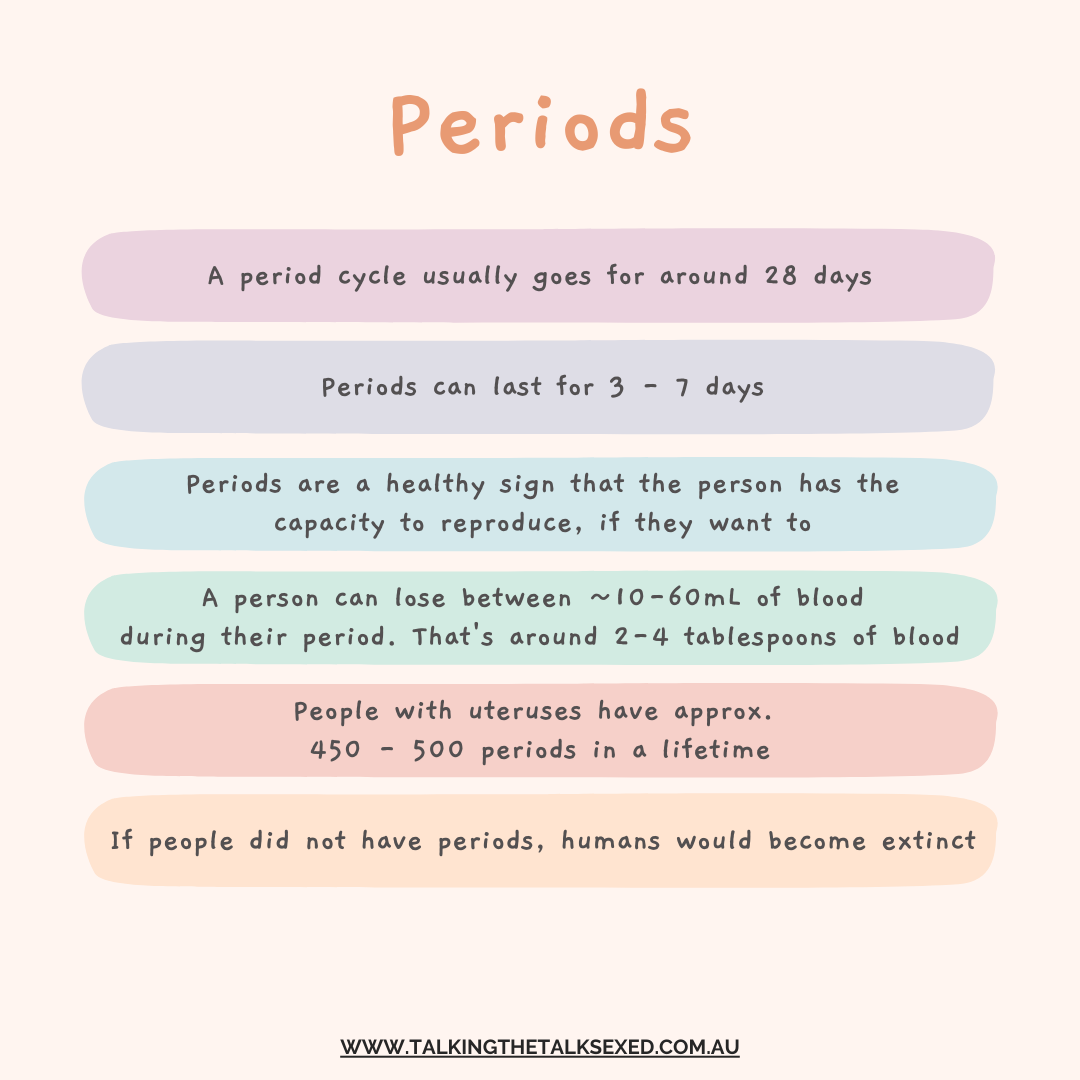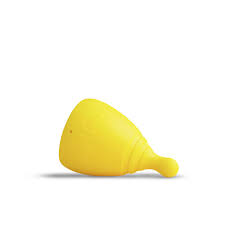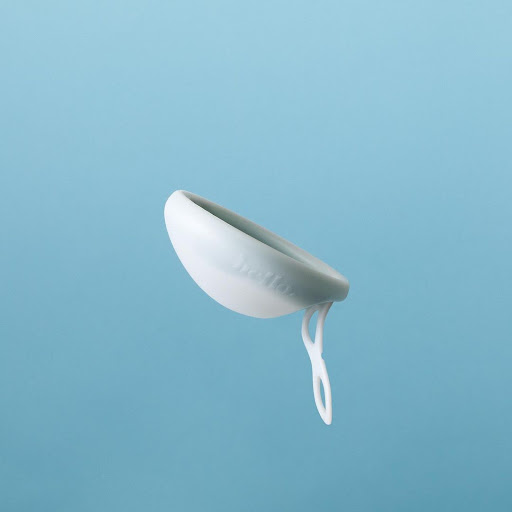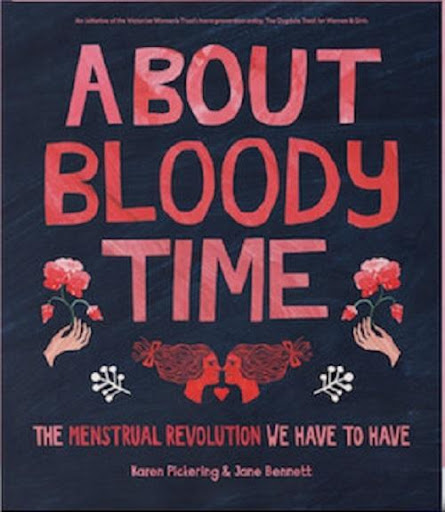Period education has come a long way!
Apr 15, 2022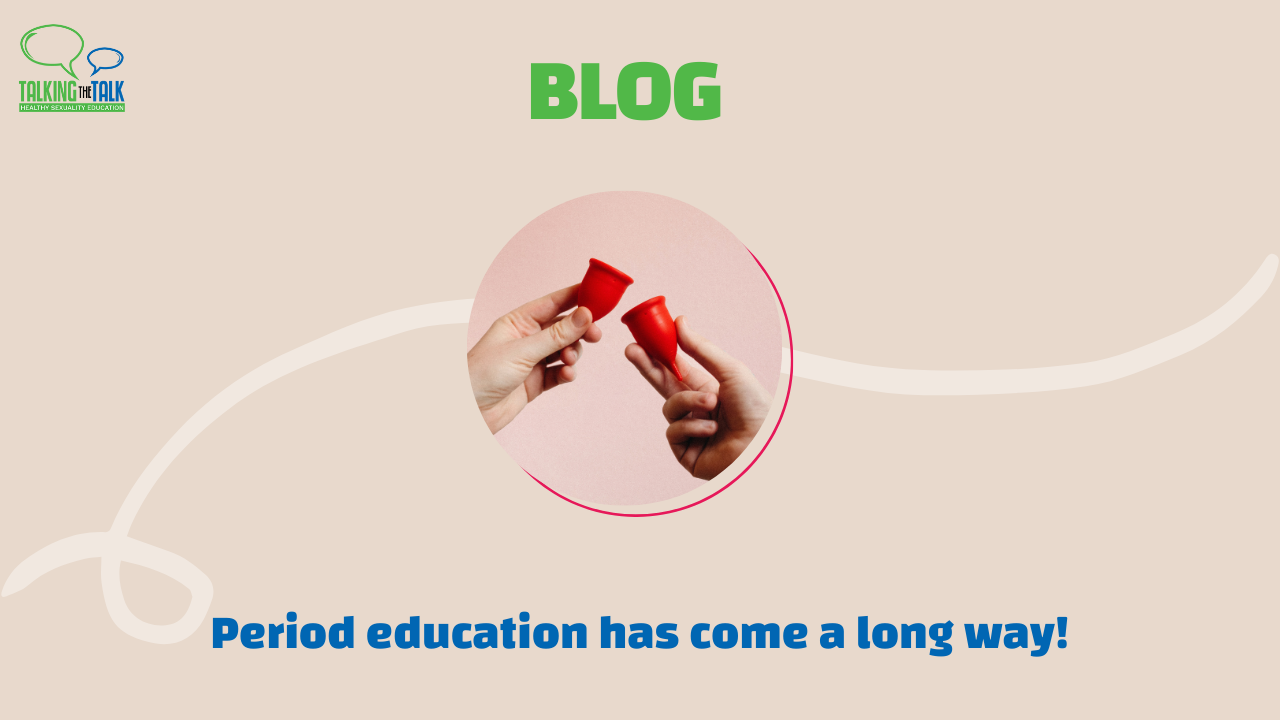
It was when I was reading the book, About Bloody Time by Karen Pickering and Jane Bennett, that I was reminded of how far menstrual education has come. When I started out in sexuality education, all that was being spoken about were pads and tampons for management of menstrual fluid. Now we have a plethora of products to choose from (excitingly, more sustainable options as well) and to educate young people about. In the beginning, I also noticed sexuality education wasn't adequately addressing the shame, taboo, and disgust approach in our society to menstruation.
Recently we have seen the introduction of realistic blood featured in advertisements used to sell menstrual products. Hopefully, we will never again revert to blue liquid poured onto pads to show their absorbency. There has been some much needed progression of period education yet there is still work to be done. Let's dive deep into the innovative progress that has been made for menstrual management products, as well as education about puberty and periods.
Sexuality education
Historically puberty education has included this particular anomaly:
- wet dreams for boys = pleasure, arousal, joy.
- periods for girls = shame, disgust, taboo.
This patriarchal approach is inequitable, inaccurate, and harmful.
Not in my classes :)
In contemporary, accurate, age-appropriate, evidence-based sexuality education, we teach:
- Reproduction function:
- Periods & ovulation for people with ovaries & uteruses alongside sperm production for people with testicles and penises.
- Pleasure Function:
- Wet dreams for people with a penis alongside vaginal lubrication and wetness for people with a vagina.
It is important to convey equitable positive messages to all, as there is no place for taboo, shame, or disgust about the typical function of the wonderful human body.
We say that periods are an amazing and wonderful sign that the person has the potential to reproduce (if they want to) and that it is a normal healthy sign of reproduction. Humans would not be here without them and 50% of the population experience them.
They can be problematic and painful for some people who have them so these people are amazingly strong to manage 450 - 500 of them during their lifetime.
New and sustainable period products
The 21st century has seen the creation of new and innovative period products. This includes period underwear, reusable pads, menstrual cups, and menstrual discs.
These products are reusable and therefore more sustainable. They provide more options for people and options for comfort and ease of use/wear. Not to mention less of an impact on mother nature.
Period kit for school bag video
Watch the video and read the blog in full here.
Period underwear
Period underwear look like regular underwear and mostly feel like it too, except they are made with a panel of layers of moisture-wicking fabric that soaks up menstrual blood as a pad would. There are different absorbency level options, different underwear cuts (i.e. shorts, bikini), and options ranging from wearing for a few hours to designs for overnight use. They can be worn alone or with other period products (such as tampons or menstrual cups) for extra protection. After using, they are washed and worn again.
Reusable pads
Reusable pads function like the sanitary pads we are already familiar with but they are made of fabric that is clipped around underwear. Once used, they are unclipped and washed, ready to be used again and again.
Menstrual cup
A menstrual cup is a small, flexible cup that is inserted into the vagina to collect menstrual fluid. They can usually be worn up to 12 hours and hold more blood than tampons and pads. There can be a bit of a learning curve getting used to using a menstrual cup as these silicone/rubber cups need to be folded in order to be inserted and need to fully open in order to achieve suction (and ensure all blood goes into the cup itself). Breaking the suction for removal can be tricky, but becomes much easier with practice. There are different sizes to accommodate for differing lengths of a cervix, heaviness of flow, and whether a person has given birth or not before.
Menstrual disc
Menstrual discs are thinner and more flexible than a menstrual cup. Unlike a menstrual cup, a menstrual disc can be worn during penetrative, vaginal sexual encounters. It is easy to insert and sits below the cervix. Some have tabs or loops (like the one pictured) to make it easier to remove them. Period Nirvana have excellent videos on this.
About Bloody Time Book
Image from Victorian Women's Trust
Reading this book, I was optimistic that this was such a great sign that menstrual education is changing and the perspective is shifting from shame to empowerment. The book uses statistics and quotes that come from people’s lived experiences. The Victorian Women’s Trust (which published this book) surveyed over 3000 women and girls from across the world (though most of the data is from Australia). From ages 12 to 45 + years old, girls and women were asked about their thoughts and experiences of menarche to menopause.
This book focuses on the link between gender inequality and periods, so it is concentrated on those who identify as female and have experienced periods in their life, and therefore is why the data and language are very gendered. It’s incredibly informative and shines a light on the impact that periods have on the lives of girls and women including pain, cost, health & wellbeing, sick leave, etc.
The important message throughout this book is that we need to be breaking the taboo that surrounds periods. From the women surveyed, there was a common thread of feeling shameful and disgusted by their periods and felt the need to hide when they had their period. There were also a lot of negative feelings shared when thinking about their period. 17% of the women and girls surveyed said that they disliked everything about their period, this number was much higher in girls aged 12-18 (41% disliked everything about their period). It is this sentiment that shows that we need to shatter the taboo and shame that surrounds menstruation.
The book mentioned how different cultures talk about and celebrate periods and menopause, and specifically how people who go through menopause get special and important roles in their community. I think this is such an empowering practice and something the Western world could learn from. We need to reframe shame into empowerment. Periods demonstrate the body’s ability to reproduce (if the person chooses to) and that is an essential and powerful thing. Mostly menopause is framed as something to dread and is glaringly not included in health education. This is evident in the book as 46.5% of the women surveyed felt unprepared for menopause. Menopause is another natural part of life, so just as we should with puberty and periods, there has to be better education and more positive language used when talking about typical and expected stages in a person’s life.
For more information, see our recommended book and resource list for period positive books to use with your kids, and have a look at this blog.
Taxation of period products
In 2019, the Australian Government finally removed what was commonly referred to as the “tampon tax”. This referred to the 10% goods and services tax (GST) that was placed on tampons and pads as they were categorised as non-essential items or luxury items.
Some areas of improvement still to be made…
Period poverty
We are incredibly lucky in Australia to have period products widely accessible and have a wide variety of options available for people to choose from. However, there are still people in our country who experience period poverty and/or struggle to access period management and basic hygiene products.
For example, there was the recent #PadUpPublicHealth petition. This is a campaign that was started by Share The Dignity and aims to have free period products available in all hospitals around Australia.
Something as simple as period products should be readily available in hospitals and other public amenities.
It is a promising sign to start to see them now available in schools for free.
Period inclusivity
Information about periods has historically been communicated within society as something that only happens to women and girls. However not all women menstruate, and not everyone who menstruates is a woman. Periods are not what defines someone’s gender, but that is commonly not reflected in the language used to speak about periods. The language and pink coloured marketing surrounding menstruation have the potential to exclude trans men and non-binary people.
Often the way society frames menstruation as exclusively for females can be dysphoric for trans, non-binary, and gender diverse people. Inclusive language and marketing are simple things that can be improved to be more inclusive. We have a better understanding of periods and the people that experience periods so it makes sense that the language we use matches what we now know.
Also on the topic of language, we still need to work on how we communicate information about periods to young people and normalise talking about periods in front of kids.
Periods are still thought of as shameful, or things not to talk about in front of boys and men. Regardless of whether you menstruate and regardless of your gender, everyone needs to learn about periods. Let’s look at how we can start and continue, having more open, honest, and easy conversations about periods with young people.
Tips on how to talk about periods with and around children
Start talking about the amazing human body, the fascinating design of getting ready for pregnancy every month in order to keep the species from becoming extinct! Wow, periods are amazing!
It is so simple to start having open conversations about periods.
Here’s something that happened to me recently:
Recently, I was delayed taking my son to sport - he was in the car waiting.
Rather then making up excuses about why I was delayed, I mentioned in a matter of fact way “…sorry I am late, it must be annoying for you, I know how you feel, I'm also annoyed, because when I quickly popped to the toilet, I discovered I had my period, so had to manage that - sorry it took me extra time, but I am glad it happened at home not at the stadium…”
I turned on the radio and moved on.
He said “...are you ok Mum?...”
I responded “...I feel a bit crap, thanks for asking, I'll be glad when they are over! I’m getting close to having had my 450 periods in my lifetime - thank goodness! Yippee…”
I cheered, we both laughed…. (he already knew what menopause is, he was 11 at the time).
If you are a person that menstruates, don’t hide the impact periods have on your life and that you even have a period. Children need to see that this is a part of regular life and is a typical part of bodily functions. If you are a parent or carer that doesn’t menstruate, make an effort to mention periods in conversations. It is not the sole responsibility of those who menstruate to talk about periods and promote period positivity, after all we ALL benefit from them
It doesn’t have to be an explicit sit-down conversation every time. It is more so about normalising mentioning the word period, and other related words so young people know it is not disgusting or gross to talk about or should be hidden.
These conversations can be:
- Mentioning if you need to go back into the house to grab a tampon.
- Asking if they know where period products are stored at school.
- Mentioning where the spare menstrual products are in the house for guests - even better have them available in the bathrooms.
- Mentioning if you are in pain because of your period or talking about how you can help the person that's in pain or feeling unwell from menstruation.
- Commenting if a TV show/movie/ad accurately depicts periods.
- Speaking about how you need to put pads on the shopping list because you are running low.
If young people have the opportunity to hear about periods in everyday conversations, it will remove the shame, stigma, and sentiment that this is a taboo topic.
This video shows teachers how to depersonalise their language when talking about periods and how to use period products, with young people. This means not saying “you” or “I”. This helps make students feel like the teacher is not directly talking about them or about themselves.
Period Products avoiding 'You' or 'I' from Talking The Talk Sex & Health Ed on Vimeo.
This next video is from Jean Hailes about periods that Vanessa uses in Year 5 and 6 classrooms.
Watch it on YouTube here.
People of all genders should learn about periods and be comfortable talking about periods. It is a natural part of life. So why not start having more conversations about it?
As my tagline says: “Let's get started it's easier than you think”.
More Talking The Talk conversation starter tips:
Talking The Talk Healthy Conversations Episode 15: Ebook in audio - Conversation Starters Part 1
Talking The Talk Healthy Conversations Episode 16: Ebook in audio - Conversation Starters Part 2

